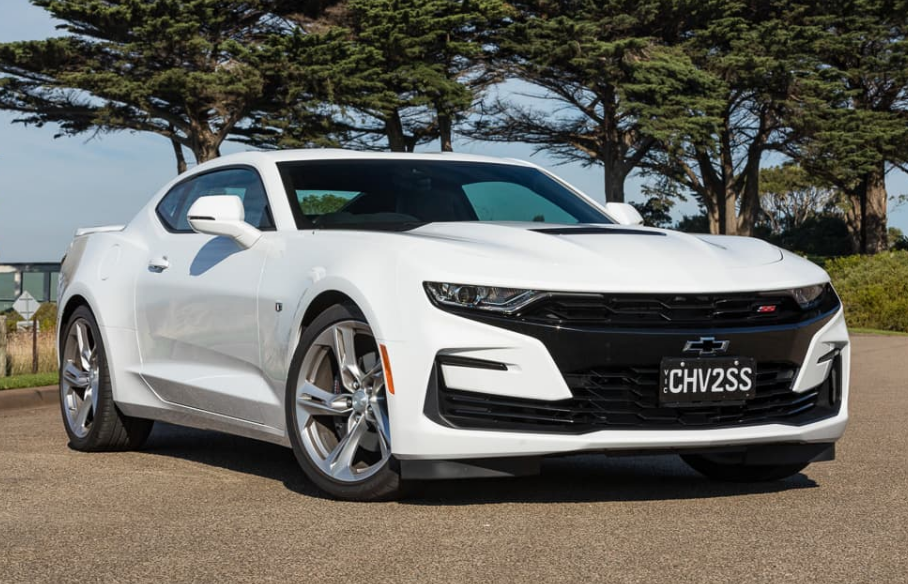
For decades, muscle car manufacturers have competed to create the fastest or most powerful car. For example, Ford became famous for its engines, which can last 500 thousand miles. The Pontiac Firebird proved that muscle cars can look stylish and fierce. And Chevrolet shocked the world with the original Camaro. Now, after six generations of Camaro, produced from 1967 to 2023, the automaker has announced its discontinuation. The car experts from the Indy Auto Man Chevrolet dealership prepared an overview of all the generations the Camaro went through.
Initially, the Camaro was codenamed Panther, and its main goal was to knock the Ford Mustang off the title of the best muscle car of the time. The Camaro appeared in 1967, 2 years after the release of the Mustang. The new product conquered the world with its design, pop-up headlights, and a wide range of V8 engines that a fan of American models would like to see under the hood.
The '67 Camaro Z/28 was considered the best as it featured a powerful 302-cubic-inch V8 engine producing 290 horsepower. The same engine was also used in the Pontiac Firebird Trans Am. With its rugged F-Body platform and powerful V8 engine, the Camaro was an instant hit with muscle car enthusiasts. The only downside to the first-generation Camaro was that it was discontinued in 1969.
The second generation of the Camaro was introduced in 1970. The most important model years of the second generation were 1970 and 1980 but for different reasons. The strongest l version of the 1970 model featured a powerful 350-cubic-inch LT-1 V8 engine producing 360 horsepower. Unfortunately, the era of muscle cars ended in the '70s due to the oil crisis.
The 1980 Camaro was laughably underpowered, with its 267-cubic-inch V8 producing just 120 hp. Despite the drop in power, it was still a blast to drive, and a '77 Camaro played the role of Bumblebee in the first Transformers movie. The second-generation Camaro was no longer produced after 1981.
In 1982, the third-generation Chevrolet Camaro promised to be the best. However, due to rising gas prices caused by the 1980s fuel crisis, the third generation was the most disappointing of the model's history. From 1982 to 1985, the Camaro was powered by one of the worst engines ever made in a muscle car, the 2.5-liter Iron Duke inline-four. It wasn't that powerful, but it looked as exotic as ever. Now it was not a typical muscle car, the model became lower, wider, and received razor-sharp edges. In addition, a limited edition called IROC-Z appeared, which became the culmination of the third generation.
In 1993, the fourth generation received the nickname Catfish Camaro. The noveltie was not as beautiful and menacing as its predecessors but remained a muscle car. It was equipped with a V6 or V8 engine. The most powerful version received a 5.7-liter engine with 330 hp. The same LS1 engine was installed in the Corvette, Firebird, Caprice, Impala SS, Buick Roadmaster, and the Cadillac Fleetwood.
With the latest technology, updated suspension design, rack, pinion steering used for the first time on the Camaro, and plastic body parts, the fourth generation elevated the Camaro to the podium. The model was even considered the vice flagship of the Chevrolet brand. The Corvette was considered the best creation of the automaker, but it lacked the charisma that the Camaro could boast.
The Z/28 and SS versions were a bold step in the development of the Camaro. They were among the few that could surpass the Ford Mustang in power and acceleration.
The car was produced until 2002.
In 2007, the Camaro returned to the screens in the film "Transformers". The fifth generation of the model officially appeared only in 2010. Thanks to this marketing decision, the film made the Camaro a long-awaited star. It was this generation that was remembered more than others. When developing the fifth-gen Camaro, designers were inspired by the original version - the 1967 Camaro.
In addition to the aggressive design, the fifth generation was distinguished by a wide range of power units. One of the best versions is the ZL1, equipped with a supercharged V8 engine that developed a power of 580 hp.
Many enthusiasts criticized GM's design decisions on the sixth-generation Camaro when it debuted in 2016. Base models featured a lot of black plastic, which made the Camaro look cheap and outdated. However, the more expensive the car, the more attractive it looked.
Most base Camaros are powered by turbocharged inline fours. Higher-end models are equipped with V6s, V8s, and even supercharged V8s. And in 2024, the Camaro remains one of the fastest cars under $30,000.
In essence, the sixth-generation Camaro is the best, focused on the track and drag strip.